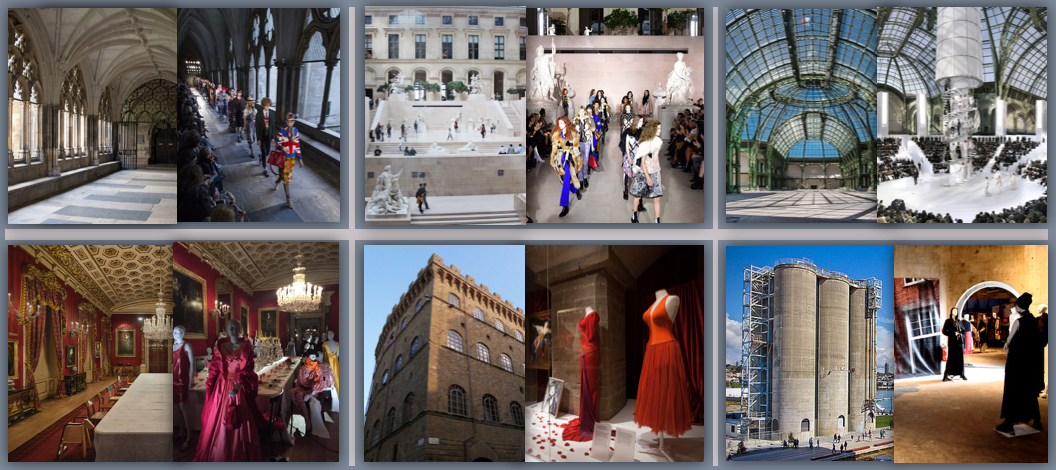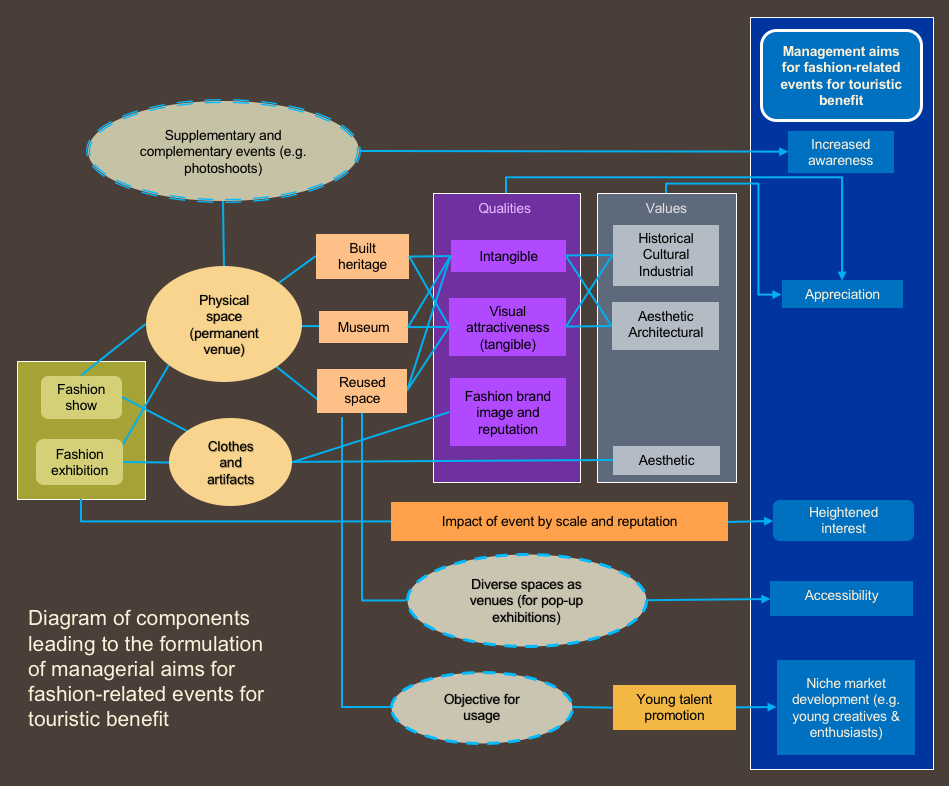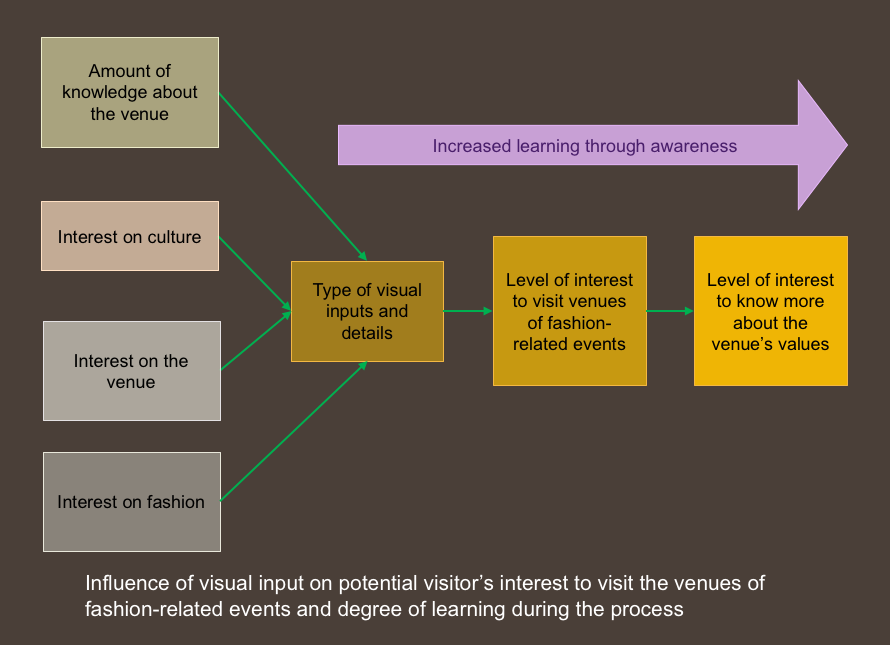Fashion-Related Events Held in Built Heritage, Museums, and Reused Spaces and Their Impact on Tourist Motivation: Analysis of Potential Tourists and Management Perspectives
Abstract
Fashion is known as contributive to the image of a place for its capability to reflect its culture. Many cities around the world are known for being capitals of culture, and the influence of fashion enables these cities to be labeled as fashion capitals. Historically referential or reflected in contemporary subculture, the prominence of fashion in cultural capitals are observed mainly from material objects (e.g. clothing) that depict styles or trends. Fashion as a cultural attraction brought in opportunities for design individuals or enthusiasts to establish themselves in cities where the term fashion is used for its own brand as a place. These opportunities then give birth to leisure activities such as shopping and visiting museum exhibitions, which eventually transform the place into a tourist destination. These given circumstances demonstrate how people belonging to the outside world of this type of capital are enticed to visit in order to appreciate the intangible (culture) and tangible (product) qualities raised by fashion.
The dissemination of fashion in the examples given above is commonly done by the holding of two types of events that portray fashion objects into two types: product and artifact. Fashion shows are held to flaunt a designer’s new collection of clothing for an upcoming season, which is later on displayed and sold in stores, while fashion exhibitions transform items such as clothing into pieces that fit into the museum context. Both show and exhibition not only disperse fashion through contemporary commodities that are available for consumption, but also as objects that depict history, culture, or any interpretation that may be given by curators. Recent observation shows a prolificacy of these fashion-related events being held in various types of venues. These events are conducted in historical buildings, museums, or other similar structures that may either carry heritage value or have been given new purpose as a form of adaptive reuse. Having built heritage, museums, or reused spaces already known as tourist attractions either for cultural or historical interest, it is worth finding out how fashion-related events held in spaces aside from built heritage are able to formulate a role in the tourism of a place. A number of these places are already branded as cultural capitals of fashion, which may reinforce their position in the tourism context. However, other cities that conduct fashion shows and exhibitions in the venues previously given are emerging or may still emerge as potential tourist attractions through the impact of the phenomenon that fashion-related events held in built heritage may have.
Although fashion-related events may not be a factor of interest for potential tourists to visit the places where the venues are located as well as visit the venues, having interest in fashion and fashion shows can encourage management or operators of built heritage, museums, or reused spaces to reconsider this interest in making use of their venues more creatively and productively. Even though the results from pre- and post-viewing of images taken from fashion shows and venues yielded no significant finding on such events’ influence on potential tourist interest to travel, this does not mean that structures with built heritage, museums, or reused spaces cease the opportunity to be utilized for the promotion of fashion in industry and cultural context. Interest in fashion and fashion shows can also be transposed from the commercial side to the cultural side through proper means of fashion product and event promotion without sacrificing the value that the venue may possess. Venue users may not primarily incorporate the value of the building or structure for their fashion shows or exhibitions; therefore, managers and operators can set regulations on enabling such values to be included by the venue users for optimal promotion. In the tourism context, the value of built heritage, museums, or reused spaces may be neglected by tourists or visitors because of these structures’ factual background as famous tourist attractions or simply buildings to be seen but not fully appreciated. The inclusion of both visual and non-visual elements of the buildings’ interior and exterior cannot be overseen by users and viewers. Although the main attention is on fashion pieces during the show or exhibition, the amalgamation of elements makeup for the overall effect that can impact viewers’ understanding and recognition of the intrinsic values of structure and space.
Theorizing the process of fashion-related events in inducing potential tourists’ interest to travel to a specific location emphasizes the importance of visual information that the tourists obtain, which is preceded by any prior amount of knowledge they may have of the venue and their values that can help them recognize them as well their interest on these venues, the tourist’s interest on culture and fashion. The influential process for potential visitor’s interest to visit the venues of fashion-related events, by which learning about these events being held in the said venues comes during the time the viewers see the images of the fashion-related events. Potential visitors may have prior awareness of fashion-related events being held in built heritage, museums, and reused spaces by having seen them before. However, the fashion shows or exhibitions and the venues they have not been previously aware of are made known to them through these images. The result may affect their level of interest to visit the venues and know more about their values. Throughout the process illustrates the potential tourist’s increased learning, whereby images become the initiators.



